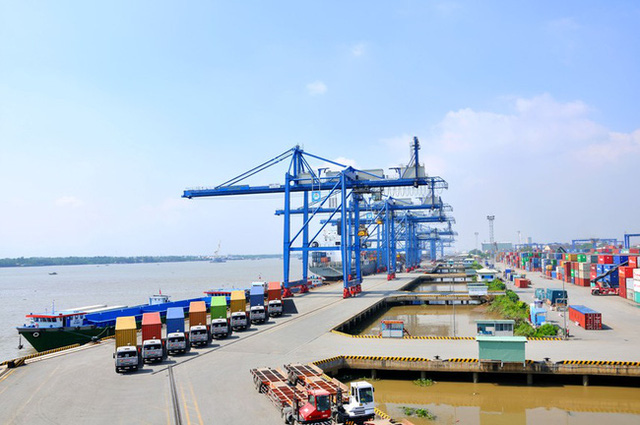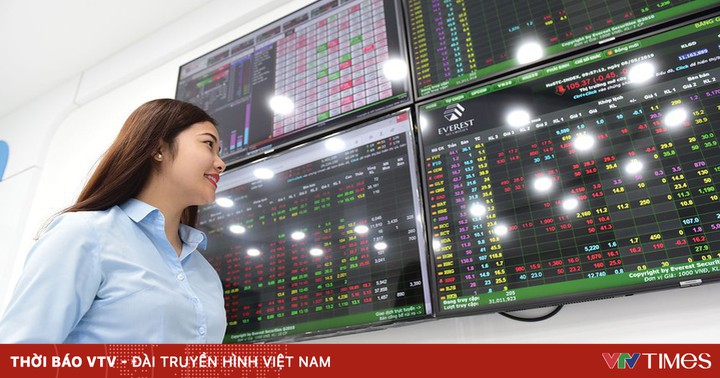Ho Chi Minh City explains the fee for seaport infrastructure
In response to the recommendations of businesses, associations, the Research and Development Board of the private economy, the Ministry of Finance, etc. about the collection of seaport infrastructure fees, the People’s Committee of Ho Chi Minh City has just sent a document to the Government Office, stating: clarify the legal basis and the rates and difference in the fees.

Cat Lai Port. (Photo: Investment Newspaper)
At the end of 2020, the People’s Council of Ho Chi Minh City passed Resolution No. 10/2020/NQ-HDND promulgating the fee for seaport infrastructure, effective from July 1, 2021.
However, due to the impact of the COVID-19 epidemic, the City People’s Council twice approved the Resolution to delay the fee collection deadline and officially collect it from April 1, 2022.
The rate of charge for goods temporarily imported for re-export, goods stored in bonded warehouses, goods in transit and goods in transit, applies the rate of 50,000 VND/ton for liquid and bulk cargo not packed in containers; 4.4 million VND/40ft container and 2.2 million VND for 20ft container.
For imported goods and exported goods whose declarations are opened outside Ho Chi Minh City, the rate of 500,000 VND/20ft container will be applied; 1 million VND/40ft container and 30,000 VND/ton for liquid goods, bulk cargo not packed in containers.
While import and export goods are declared in Ho Chi Minh City, the tax rate is 250,000 VND/20ft container; 500,000 VND/cont for 40ft container and 15,000 VND/ton for liquid cargo, bulk cargo not packed in container.
The People’s Committee of Ho Chi Minh City said that based on the Circular No. 85/2019/TT-BTC dated November 29, 2019 of the Ministry of Finance guiding fees and charges under the jurisdiction of the People’s Councils of provinces and cities directly under the Central Government. Resolution No. 10/2020/NQ-HDND of the People’s Council of Ho Chi Minh City is in accordance with regulations. That is the construction fee level on the principle that it is suitable for the contributor’s ability to contribute, which is convenient for the toll collectors and the fee payers; the rate of construction fee collection is suitable for the use of infrastructure as well as the contribution of fees and taxes to the budget; suitable with the socio-economic conditions of the city.
According to the People’s Committee of Ho Chi Minh City, in order to limit the number of vehicles transporting goods in and out of the city in the period when the traffic infrastructure cannot meet the current requirements, it is necessary to have an economic solution.
Pursuant to Circular No. 85/2019/TT-BTC, Ho Chi Minh City’s toll collection rate is lower than that at Lang Son, Lao Cai, Tay Ninh border gates… and equivalent to Hai Phong’s toll level. .
At the same time, the fee level for import and export goods that open declarations outside Ho Chi Minh City is set to be higher than those for which declarations are opened in the city in order to regulate traffic and reduce pressure on the city’s infrastructure system. by raising the fee for businesses in other localities to choose to transport goods to other seaports in other localities such as Binh Duong, Dong Nai, and Long An.
Statistics show that the throughput of seaports in Ho Chi Minh City in 2019 is more than 168 million tons, far exceeding the forecast of the Ministry of Transport in 2030 of 159.9 million tons. At the same time, the Master plan on development of Vietnam’s seaport system in the period of 2021 – 2030, with a vision to 2050, prepared by the Maritime Construction Consulting Joint Stock Company, reported in October 2020 as well. It is forecasted that the volume of goods through Ho Chi Minh City’s seaport by 2030 will reach 236.9 million tons.
Of the total number of goods passing through the seaport of Ho Chi Minh City, 40% are goods that go through customs clearance procedures in Ho Chi Minh City; 55% of goods belonging to other localities go through customs clearance procedures in localities outside Ho Chi Minh City; 5% are goods temporarily imported for re-export, stored in bonded warehouses, goods in transit, goods transshipped.
Thus, 60% of goods entering and leaving the city use the city’s infrastructure and utility services.
With the above situation of goods transported through the seaport border gate area of Ho Chi Minh City, it has put pressure on the transport infrastructure system connecting the port areas, which is already lacking and small in scale.
Also according to the People’s Committee of Ho Chi Minh City, initially the construction fee for import and export of 20ft containers is 500,000 VND/cont; 40ft container is 1 million VND/cont; liquid goods, bulk cargo not packed in containers is 30,000 VND/ton.
After considering the contribution of fees and taxes to the budget and social conditions, the city determined to reduce the fee by 50% for businesses that open declarations that are businesses that contribute to the city budget.
As for the proposal of the Ministry of Finance to consider soon adjusting the fee rates for import and export goods with declarations open inside and outside the city, the People’s Committee of Ho Chi Minh City said that the city has just implemented the collection of lower fees. The seaport floor is more than 1 month old, so there is not enough database to evaluate.
Therefore, the People’s Committee of Ho Chi Minh City has assigned the Department of Transport to continue to monitor the situation of port infrastructure fee collection and record the comments and suggestions of ministries, sectors, associations, businesses and other relevant agencies. to organize the review and assessment of the fee collection situation and review the suitability.
If amendments are needed, the City People’s Committee will submit to the City People’s Council to amend Resolution No. 10/2020/NQ-HDND as soon as possible.
* Invite readers to watch programs broadcast by Vietnam Television on TV Online and VTVGo!
at Blogtuan.info – Source: vtv.vn – Read the original article here



